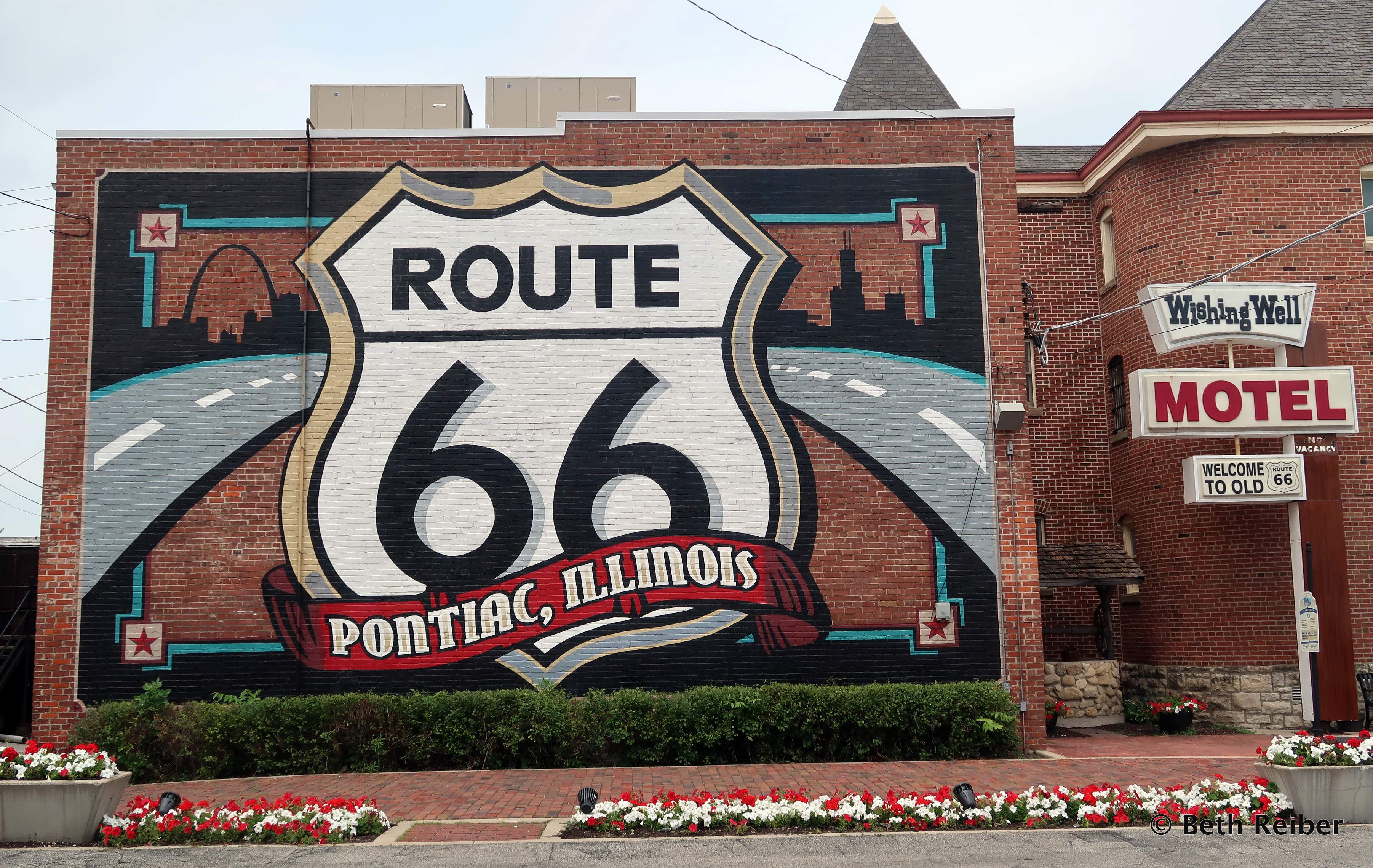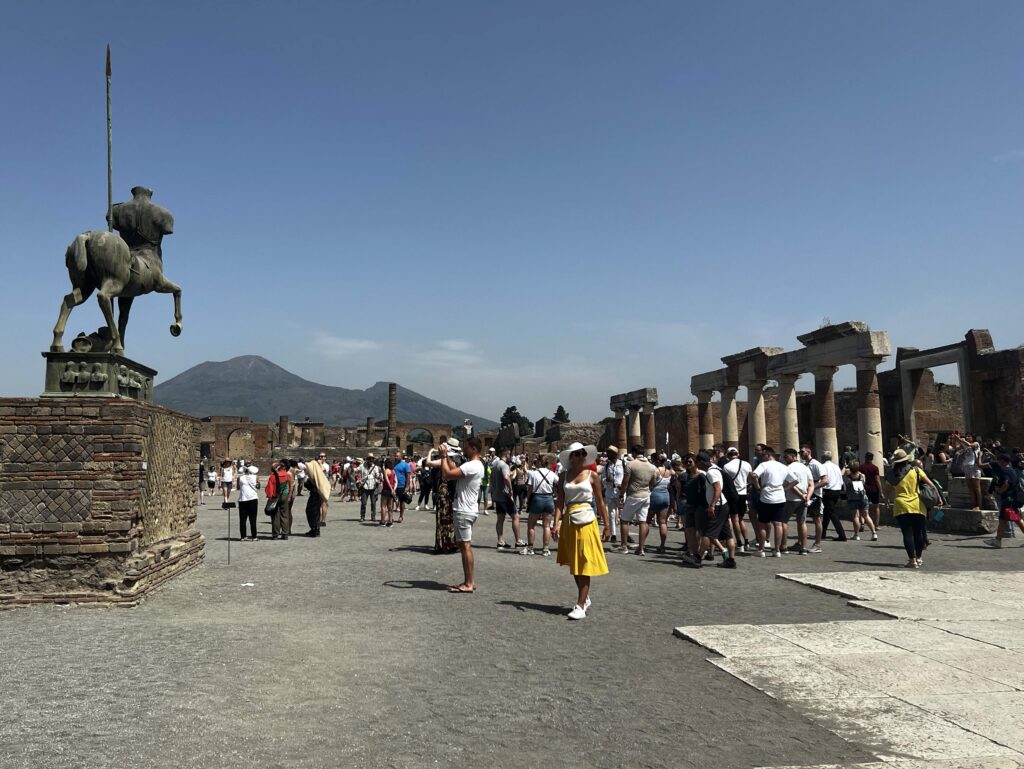Sintra was the playground of Portugal’s 19th-century rich, which explains why it has more than its fair share of palaces, castles, country estates and villas. It also explains why many of these are part of the Cultural Landscape of Sintra, a UNESCO World Heritage Site that celebrates the region’s natural landscape and 19th-century architecture.

Like much of Portugal, Sintra is challengingly hilly, with ravines slicing up the city and many of its most famous residences occupying peaks high above town. One day my travel companion and I walked 22,000 steps, with our uphill steps recorded as being the equivalent to climbing a 60-story building. In other words, Sintra is not for the fainthearted or those with mobility issues. Though there are (overcrowded) city buses and Uber, for the most part you’re going to be walking around.
Quinta da Regaleira

Quinta da Regaleira isn’t Sintra’s top sight, but it turned out to be my favorite. That’s because of its garden, a whimsical fantasy of grottoes, caves, tunnels, overgrown vegetation, and decorated fountains and statues featuring mythical creatures and gods. The fact that it seems operatic is due to the fact that the Italian architect who designed both the estate’s palace and garden was actually a set designer for opera. His imagination seems to have run wild here, making it the perfect example of Sintra as the playground for Portugal’s 19th-century rich.
For more on why I enjoyed getting lost in Quinta da Regaleira, see my article, Sintra’s Quinta da Regaleira Invites Exploration.
Parque e Palacio Nacional da Pena

Sintra’s top attraction is the Park and Palace of Pena, and with good reason. Perched high on a peak so that royalty could look down on their subjects, the palace is a massive and jubilant tribute to 19th-century Portuguese Romanticism, with a riot of architectural styles that include Egyptian, Moorish, Gothic and Renaissance elements. Built on the ruins of a medieval monastery destroyed by the massive 1755 Lisbon Earthquake, the palace was the inspiration of Don Fernando II, a German prince who married the queen of Portugal, Dona Maria II. Because Fernando was so much more interested in the arts than politics, he is known as the Artist King. It’s probably safe to say that Pena is a big reason why Sintra became the playground of Portugal’s 19th-century rich. Who among the wealthy wouldn’t want to have Pena Palace and its occupants as neighbors?
Constructed from 1842 to 1857, Pena Palace is almost a city-within-a-city, with towers, turrets, terraces, chapel, cloister, ramparts, god knows how many rooms, and various buildings painted vivid colors, from blood red to blue, topped with gleaming golden domes. Influenced also by opera (it must have been a thing back then), Fernando instructed that both his palace and garden reflect his theatrical passions. It’s perhaps not surprising, then, that after Queen Maria II died in 1855 giving birth to their 11th child, Fernando married an opera singer, the Countess of Edla, who played a key role in designing the palace’s interiors.

Pena Park is no less impressive, occupying 210 acres of what was once a barren hill but is now home to gardens, lookout points (a lot of climbing involved here, too), rock formations, greenhouses, lakes, and 500 different species of trees from around the world.
Castelo dos Mouros

It’s about a 15-minute walk via a pedestrian path from Pena Palace to the entrance of the Moorish Castle, but subsequent endless stone stairs mean that your exercise for the day isn’t over. An Islamic military fort built by Muslims around the 10th century, today the site is mainly ruins, but it’s worth visiting nonetheless for its sweeping views toward the sea, castle keep, granaries used to store cereals and legumes, stables, and other archeological sites. Note, however, that ramparts are narrow and can be crowded. Over the centuries I imagine more than a few unlucky souls have been jostled over the edge, not the least during the fortress’ construction on such a rocky and inhospitable outcropping.
From the Moorish Castle, another pedestrian path leads downhill to Sintra’s historic old town. Along the way you’ll pass Villa Sassetti, which was designed by the same Italian architect who designed Quinta da Regaleira.
Palacio Nacional de Sintra

Built on the site of a Moorish castle in the town center, the National Palace of Sintra underwent various reconstructions by succeeding Portuguese kings from about 1281 until it reached its present form in the mid 16th century. Now considered the best-preserved medieval palace in the country, it’s the usual royal abode, with its long row of interconnecting rooms, plus reception, dining, official, and entertainment halls. The Room of the Coats of Arms, considered the most important heraldic room in Europe, contains the coats of arms of six sons and two daughters of King Manuel I and his second wife, as well as crests of the 72 most influential noble families in Portugal. The palace’s most outstanding features are its glazed tiles, considered the finest example of the Mudejar style (a combination of Muslim and European influences) on the Iberian Peninsula.
But I was particularly taken with the rooms’ decorative ceilings, so if you don’t look up when walking through the palace you’ll miss one of its most interesting details. Otherwise, the grandiosity of the Swan Room where entertaining was done and the large kitchen with its twin 108-foot-high conical chimneys where feasts of wild game were prepared whisper of days past and of the festivities that once took place here.

More to do in Sintra’s playground of Portugal’s 19th-century rich

If you have more than two full days (or if you like to really pack ’em in), another listing on the Cultural Landscape of Sintra UNESCO World Heritage Site is the Park and Palace of Monserrate. Because it’s a bit farther out than the ones listed above, it’s often overlooked but has the same prevailing Romanticism architectural style that captivated Sintra’s 19th-century rich. Combining gothic, Indian and Moorish elements, it was designed by an English architect as a summer residence for English billionaire Francis Cook. Its garden is renowned for its exotic plants from around the world, including Louisiana, Mexico, Japan.
You also don’t want to miss Sintra’s small but picturesque historic center, with its narrow, sloping streets lined with restaurants and shops.

Sintra’s tram cranks its way from town to the Atlantic
But one of the more unusual things to do is to take the Sintra Tram from town to the Atlantic. Established in 1903, the Electrico de Sintra chugs through villages and the countryside to Praia das Macas in about 45 minutes, where there’s a beach and open-air restaurants.

In short, Sintra is one of Portugal’s architectural gems, which also means it is crowded with visitors. It’s hard to imagine what life was like in Sintra for Portugal’s 19th-century rich when today their palaces, villas, and gardens are filled with people from around the world snapping selfies. Their world is gone, perhaps rightfully so, and while I lament that I can never see what used to be, at least we now have the chance to marvel at what they left behind.
For more on Portugal, see my blogs on Obidos, Portugal’s Prettiest Walled Village; Porto is the Portuguese city you don’t want to miss, and Guincho Beach–A Vacation from our Portugal Vacation.






3 thoughts on “Sintra–Playground of Portugal’s 19th-century Rich”